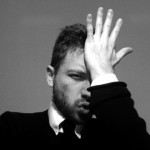 I’ve said it before, and it bears mentioning again: search engine optimization has changed. Back in its early days, when the Internet was still in its infancy, SEO was all about manipulating search algorithms; it was all about nailing down the most successful ranking tactics. Content was often a secondary concern.
I’ve said it before, and it bears mentioning again: search engine optimization has changed. Back in its early days, when the Internet was still in its infancy, SEO was all about manipulating search algorithms; it was all about nailing down the most successful ranking tactics. Content was often a secondary concern.
In other words, the early days of SEO were about the engine rather than the user.
That’s no longer the case. Google updates its algorithms. Each update makes search smarter. It understands what users like. Social media drives much web traffic. People share interesting pages. They share on Reddit, Facebook, or Twitter.
Not surprisingly, this has resulted in a paradigm shift in SEO. Search algorithms still matter. But now, focus on users. Don’t just chase tactics. If people dislike your site, it won’t rank well.
Appealing to one’s audience isn’t just about producing great content – it’s about making that content accessible. It’s something I’ve seen a lot of webmasters forget: a website’s navigability plays a key role in user engagement. As such, a site that isn’t easy to navigate is no good at all.
Let’s go over a few things that can be done to make a website more navigable:
Make It Mobile-Friendly
The first and most important piece of advice I’m going to offer is that your website needs to be designed so that users on mobile devices can access and browse it with relative ease. Mobile device usage is becoming more prevalent with each passing day – currently, there are over 2.1 billion mobile web users in the world. In short, you’re alienating a large percentage of your user-base if you aren’t designing your website to be mobile-friendly.
It’s generally not all that difficult to do, either – there are ready-made solutions that bring touch friendliness to content management systems like WordPress, and responsive themes are becoming more common.
Avoid Resource-Intensive Elements (Where Possible)
You know not everyone uses a desktop PC. Many use phones. Avoid heavy elements. Flash is one example. Don’t use it if you can. Generally, you should try to keep the size of your pages somewhere below 1500 KB — any higher, and you’re going to cause problems for a lot of users, who will experience poor performance and slow load times.
Pay particularly close attention to your ads. More than once, I’ve found myself on a website that caused my computer to slow to a crawl because a not-so-clever marketer decided to pump out a poorly-optimized flash advertisement.
Don’t Interrupt The User
If you’re looking for a surefire way to irritate users and drive them away from your page, interrupt their browsing experience. Load up your website with auto-playing video, popover ads, popups, and background music. If, however, you want your site to be easy to navigate, then avoid being intrusive. It’ll only serve to make your site less accessible – and less appealing as a result.
Set Up An Organized Sitemap, And Ensure Site Design Is Consistent
Particularly on larger websites, you want to make sure your audience knows where they are – and that they can find where they’re going. Set up an organized, generalized site-map, and make sure it remains consistent across all pages. If you want a guide on the best way to do that, you can check out this piece by Michael L Bernard. Although it may be a bit dated, the information it contains is still very much relevant to navigability.
Don’t Over complicate!
Last, but certainly not least, don’t make your website too complicated. Do you really need ten different entries on your sitemap you need twenty backlinks per post, or ten different advertisements a page? Do you need to write ten thousand words every time you publish a new article?
More than anything else, modern webmasters should follow the KISS principle (Keep It Simple, Stupid). After all, the more streamlined a website is, the easier it becomes to navigate.
In Closing
Search Engine Optimization isn’t dead, but it’s definitely changed a great deal from what it used to be. These days, it’s all about making sure your website appeals to the user enough for them to share it with their friends. One of the most important factors in this appeal is a site’s accessibility. A page that isn’t navigable isn’t going to get shared – and a page that doesn’t get shared isn’t going to rank.
If content is king, then accessibility is queen.



